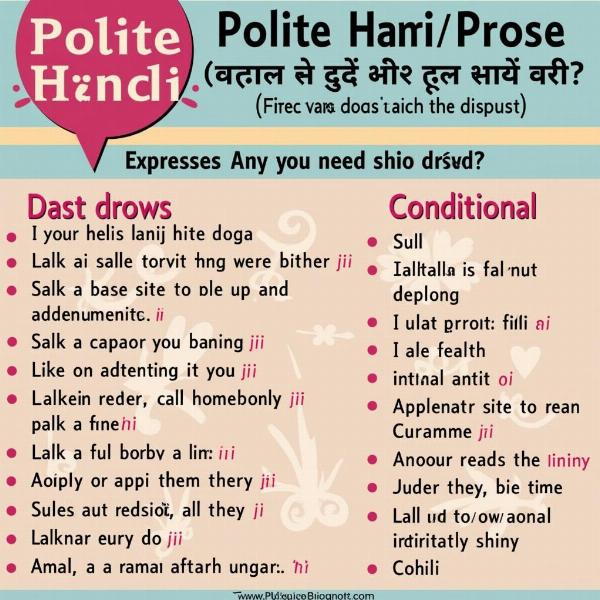Understanding the nuances of expressing desires in a different language can be challenging. “I just want” is a common phrase used to convey a simple desire, but finding its perfect equivalent in Hindi requires understanding the context and cultural implications. This article explores various ways to translate “i just want meaning in hindi,” offering insights into the subtle differences between each option and providing practical examples to enhance your communication skills.
Different Ways to Say “I Just Want” in Hindi
Several Hindi phrases can effectively translate “I just want,” each carrying slightly different connotations. Choosing the right phrase depends on the formality of the situation and the specific desire being expressed.
-
Main sirf chahta/chahti hoon (मैं सिर्फ़ चाहता/चाहती हूँ): This is the most common and versatile translation. “Chahta hoon” is used by males, while “chahti hoon” is used by females. It signifies a simple desire without any strong emotional overtones. For example, “I just want a cup of tea” would translate to “Main sirf ek cup chai chahta/chahti hoon.”
-
Main bas chahta/chahti hoon (मैं बस चाहता/चाहती हूँ): “Bas” adds a slight emphasis, similar to “just” or “only” in English. It can imply a limitation or a specific focus on the desired object. For example, “I just want to sleep” can be expressed as “Main bas sona chahta/chahti hoon.”
-
Mujhe sirf … chahiye (मुझे सिर्फ़ … चाहिए): This construction uses the verb “chahiye,” which means “to need” or “to require.” While it translates to “I just need,” it often carries the connotation of “I just want” in casual conversations. For instance, “I just want some water” could be said as “Mujhe sirf paani chahiye.”
-
Main kewal … chahta/chahti hoon (मैं केवल … चाहता/चाहती हूँ): “Kewal” is a more formal and literary word for “only” or “just.” It is used in more formal settings or when expressing a specific and exclusive desire.
Expressing Desires Politely in Hindi
Politeness plays a significant role in Indian culture. When expressing desires, using polite forms is crucial, especially when interacting with elders or superiors.
-
Adding “ji” (जी): Adding “ji” after the name or pronoun shows respect. For example, “Aap kya chahte hain, ji? (आप क्या चाहते हैं, जी?)” means “What do you want, sir/madam?”
-
Using the conditional tense: Using the conditional tense softens the tone and makes the request sound less demanding. For instance, “Agar ho sake toh, mujhe ek glass paani chahiye (अगर हो सके तो, मुझे एक ग्लास पानी चाहिए)” means “If possible, I would like a glass of water.”
 Polite Hindi Phrases for Expressing Desires
Polite Hindi Phrases for Expressing Desires
Common Mistakes to Avoid
When translating “I just want” into Hindi, avoid directly translating word for word. This can lead to unnatural and sometimes grammatically incorrect sentences. Instead, focus on conveying the intended meaning using appropriate Hindi phrases.
Choosing the Right Word for Your Context
The specific Hindi word or phrase you choose will depend on the context. Consider the formality of the situation, the intensity of the desire, and the relationship with the person you are speaking to.
What Does the User Really Want to Know?
When someone searches for “i just want meaning in hindi,” they are likely seeking more than a simple translation. They want to understand how to express their desires effectively and appropriately in a Hindi-speaking context.
Conclusion: Mastering the Nuances of “I Just Want” in Hindi
Mastering the various ways to express “i just want meaning in hindi” empowers you to communicate your desires effectively and respectfully in Hindi. By understanding the nuances of each phrase and choosing the right words for your context, you can navigate social situations with confidence and build stronger connections with Hindi speakers. Remember to consider the level of formality, the intensity of your desire, and the cultural context to ensure clear and appropriate communication.
FAQ:
- What is the most common way to say “I just want” in Hindi? The most common translation is “Main sirf chahta/chahti hoon.”
- How do I express desires politely in Hindi? Add “ji” after the pronoun or name and use the conditional tense.
- Is it okay to directly translate “I just want” word for word? No, it is best to use appropriate Hindi phrases that convey the intended meaning.
- What if I’m unsure which phrase to use? Start with the most common translation, “Main sirf chahta/chahti hoon,” and adjust based on the context.
- Where can I learn more about Hindi grammar? Many online resources and language learning platforms offer comprehensive Hindi grammar lessons.
Meaning-Hindi.in is your one-stop solution for all your Hindi translation needs. We offer a wide range of professional translation services, including business and commercial document translation, certified and legal document translation, technical and user manual translation, website and localization translation, educational and academic document translation, and express translation services. We understand the nuances of the Hindi language and culture and strive to provide accurate and culturally sensitive translations. Contact us today for all your Hindi translation requirements at [email protected] or call us at +91 11-4502-7584. Meaning-Hindi.in is dedicated to bridging the language gap and facilitating seamless communication.